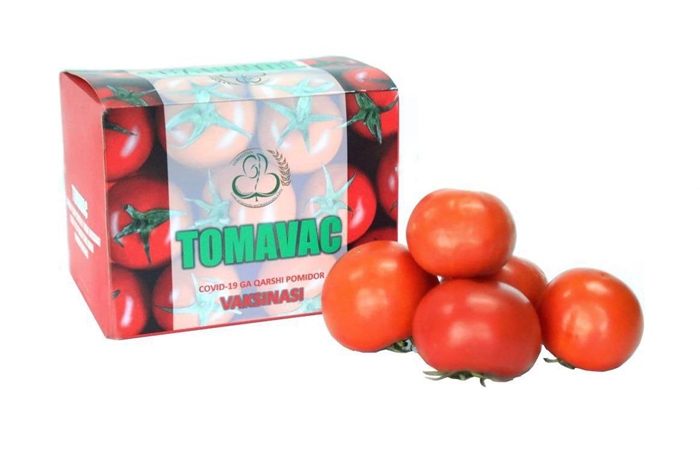Uzbek scientists have developed a new generation vaccine against COVID-19 coronavirus infection based on genetic vectors and tomato.
The tomato variety or TOMAVAC tomato vaccine was created as a result of placing a fragment of the gene encoding the S1 protein antigen of the coronavirus in special vectors. Such a tomato regularly produces the S1 antigen protein.
In phase 1 of the immunogenicity and biosafety experiments, 14 volunteers aged 30 to 52 years consumed 50 grams (38.5 mcg of S1 antigen) of tomatoes (TOMAVAC) during lunch for 3 days (a total of 150 grams of tomatoes or 115.5 mcg of S1 antigen).
The activity of their blood serum neutralizing antibodies increased 1.2 times per week (on average +42.28 BAU/ml) compared to the first day. No severe side effects were observed, preliminarily supporting the safety of TOMAVAC. With the completion of future large-scale studies, higher-generation TOMAVAC should be a cost-effective, ecologically friendly, and widely applicable novel-generation COVID-19 vaccine, providing two-layered protection against SARS-CoV-2.
The vaccine is being researched and developed by the Center of Genomics and Bioinformatics, Academy of Sciences of Uzbekistan, Tashkent, Uzbekistan, Institute of Immunology and Human Genomics, Center of Advanced Technologies under the Ministry of Higher Education, Science and Innovations of Uzbekistan. The State Center for Expertise and Standardization of Medicines, Medical Devices and Medical Equipment of the Ministry of Health of Uzbekistan provided support in conducting preclinical studies.
“Early evidence from small-scale proof-of-concept study results promises an opportunity for performing inexpensive, eco-friendly, and safe plant-based edible vaccine immunization programs against COVID-19. This might offer longer-term, two-layered protection that limits viral transmission and disease progression, helping to secure global health,” the authors of the research report note.
An article on the development of the TOMAVAC vaccine has been published in the scientific journal Frontiers:
https://www.frontiersin.org/articles/10.3389/fnut.2023.1275307 ///nCa, 12 January 2024
